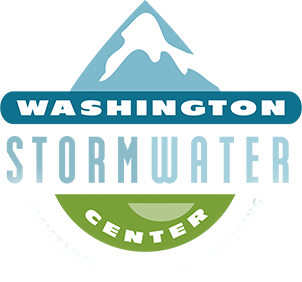We are living at a time of an energetic anti-science movement, rapidly escalating climate change, and associated stormwater risks. This is a ripe opportunity to evaluate how we can build relationships between scientists and our many audiences to create solutions to our wicked problems. This article explores some of the underlying drivers and opportunities.
What follows are a few thoughts regarding some of the major issues behind science and society. These thoughts reflect my experience using available tools and practice to promote and communicate essential scientific facts, impacts, meaning, and outcomes with individuals, cross-regional teams, and within organizations.
I. Summary Issue Factors
Science and Society issues, communication, and acceptance tend to be framed by:
Positive Drivers
· A prolonged and energizing emphasis on diversity in STEM pipelines and outreach.
· Meteoric increase in the rate of science engagement and communication, with accompanying capacity building and institutional support.
· Formalized science communication training in academic institutions.
· Mass media framing of science and scientists as quirky and fun (Big Bang Theory).
· Positive advances in science and medicine that are well publicized that people can relate to and benefit from.
· The dynamics of social, or group learning which has a cascading effect that supports the science enterprise.
· Children are sharing their excitement about science with their families.
· TED™ talks have expanded the reach of science in conversational and accessible ways.
· The promise of relationships and working models of co-learning and collaboration.
Barriers
· The inherent social and biological qualities of human behavior which lead to emotional decision-making and cognitive biases, rather than idealized rational thinking.
· The dynamics of social learning and communications which leads to self-reinforcing feedback and misinformation.
· Silos and organizational dynamics that inhibit perspective and block openness.
· The “Expert Trap”: The feeling of all-knowing which can inhibit collaboration.
· Social Media and other news sources can spread misinformation virally.
· Jargon which obscures understanding and creates power distance.
· The dearth of context and resonance for science in people’s daily lives.
II. Predominant Issues in Science and Society: Detailed Issue Explanation
Our Humanity
There are a multitude of intersecting factors that tend to inhibit effective science and society relationships and co-creation. It starts with us. Armed with nearly one hundred cognitive biases, humans are a far cry from the economic and legal models of the rational human. We are visual, and emotional, and reach to confirm our belief systems, what comes first, and what our social groups tell us to think and feel.
Humans, like dogs and horses, are group animals and unconsciously seek “in-group” affiliation and acceptance which can either foster or distort, support for scientific approaches, principles, and findings. To bridge the gap between assumptions and fact, we must recognize—and where possible utilize—our rational/irrational tendencies and use them to our benefit.
A. Organizations and Societal Context
The curse of all-knowing, power distance, and silos
In many organizations, acknowledging that you don’t know or understand something can lead to negative repercussions. The context and culture of organizations can push organizations and their staff towards a healthy learning stance or can establish barriers to learning. Science is very complex and unless we establish respectful, open dialogue, non-scientists may be unwilling or afraid to engage due to the perception of inadequacy for not knowing or understanding science.
I have seen and experienced this knowledge insecurity across various audiences in the course of my work, but solutions are in hand. Creative engagement in the form of science salons, science fashion shows, gamifying science, or bringing it into the kitchen and field can go a long way toward contextualizing science and breaking down power distance.
Actual co-creation of science with extended peer audiences is a powerful tool but requires a considerable shift in how scientists tend to do their work. At a minimum, co-creation would require changes in HR practices in science-based organizations and consortiums that will staff social scientists, artists, and interdisciplinary thinkers.
It is worth watching John Oliver’s piece on the confusion mass media reporting about science fosters. The serious issue of scientific uncertainty underscores one of the greatest science communication challenges: how to talk about uncertainty without denigrating the validity of the scientific findings. Uncertainty often drives people away from science because it makes decision-making confusing and can (falsely) indicate a lack of credibility in the scientific process and resulting findings.
When the right brain gets more play time
When kids are young, they are bold and brave students of life, subconsciously using their innate learning modes; visual, aural, kinesthetic, musical, interpersonal, environmental, and others as outlined in Howard Gardner’s multiple intelligences. Apparently, by the time we are 20, we lose most of those ways of thinking due to the crushing effect of social judgment. Using art, music, and prose in science communication can unleash creativity and is a natural complement to science, making it accessible, recognizable, and stimulating in different ways.
Societal Shifts
Acceptance and engagement with the science enterprise have been influenced by cataclysmic societal trends. Among these trends are the ability to mimic and misrepresent facts, a non-stop news cycle and political rhetoric that evokes fear, seismic shifts in the Overton window about what’s considered accurate and politically acceptable, and our very understanding of facts and “the” truth (Misinformation and Mass Audiences.) Taken collectively, this context poses some thorny challenges for science engagement and support.
At this point, we have normalized “othering” which has divided us in every conceivable way, including scientists vs. non-scientists. A shift towards effective science engagement and meaningful conversation will require humanity, love, integrity, and a common vision for sustainable development that puts science at the center of the moral arc.
The greatest promise and peril is the sheer amount of information available from a multitude of resources. People are overwhelmed by too much information and lack clear guidelines for curating science and related information. This can lead to apathy and confusion. The Pew Research Center indicates that three out of every ten adults is online “almost constantly” which is at once terrifying but also opens up opportunities to frame science and its role by effectively utilizing the online environment.
That said, online learning needs to be mediated by in-person conversations, field trips, and other forms of engagement in which meaningful conversations can take place about scientific findings and their import. Personal relationships and conversation are still considered the most effective pathway for establishing trust in scientists. Interactive, applied learning is often the most effective way for adults to learn.
B. Risk and Unintended Consequences
All scientific advances and products pose some risk. In the absence of an understanding of the risk calculus, people may overestimate risk from scientific endeavors. A transparent, public conversation about unintended consequences and ethics associated with scientific advancements would help strengthen trust in science. Training in risk communication is essential to advancing science and every science practitioner should have a baseline understanding of the underlying principles. This understanding will help to create a context for how others understand and react to scientific advancements.
C. The Context of Science
Access to Science
Many people don’t have access to science in a way that resonates or is understandable to them. Developing context for science is indispensable to understanding its value and engaging or acting on that understanding.
Science Communication Objectives and Audience Identification
A conversation about priority audiences, how to identify different audiences, and sharing science in diverse communities of practice and social networks builds on early identification of objectives for science engagement and communication.
Applied science examples
Case studies and narratives about applied science- who was involved, the motivation and the outcomes for people, trends, opportunities, and health- have been recognized as effective tools.
Group animals
Humans, as group animals, respond to social influence- they rely on their social group to show them what to do if they are not sure. Their social reference groups are the opinion leaders or prominent, compelling voices in their social or professional network. Understanding the identity of these people– sometimes referred to as influencers– is invaluable and key to expanding the reach of science, scientists, and the value they gift.
Priority Audiences and Communities of Practice
The relationship between scientists and priority audiences implies a relationship:
· A mutual exchange of learning- audiences learn from scientists but scientists also learn from external audiences, including those who don’t have science backgrounds.
· Scientists can ask different audiences questions about external audience values, beliefs, and what they care about. This methodology ensures audience resonance: your science resonates with issues and values that matter to them.
· Something about YOU-the scientist: your background, your interests, and other aspects that make you approachable and human. This is how you build trust, put a face on science, and reduce claims of agenda or bias.
· How your science connects with how they LIVE! Eating seafood, engaging in outdoor recreation, avoiding flooding, avoiding or treating disease, family planning, and protecting nature-based visual attributes they care about are examples.
· Motivation, which is developed from assessing benefits/perceived outcomes + capacity + belief that if I do x, y will occur (self-efficacy).
D. Science In your Beer and Humanizing Scientists
Using the precautionary principle in decision-making and engaging in value-based discussions about options would help. Because new learning is attached to what we know already, the effective use of metaphors and analogies is very useful. I often use cooking and house foundation examples myself because most people can relate to these concepts.
You might be surprised by how many people don’t have a direct relationship with a scientist or have never met one. Trust is established primarily through human relationships with scientists: conversations, joint problem-solving, and engaging in more relaxed settings (see Stanford’s research on creativity and walking meetings).
Other factors that influence trust in scientists:
• Who the audience is (race, sex, social capital, education, knowledge)
• Social identity (how people think about themselves)
• Whether you are judged as warm and competent
• Judgments about your motives and intent
• Source of the information itself
Language matters
Language and words matter. Anyone who has fallen in love, written a poem, read a book, or watched a compelling film knows this. Words, in conjunction with passion, clarity, and gifting pathways for hope and engaged change, are more powerful than you know.
We need permission to be ourselves and to tell our stories which are powerful carriers of meaning.
Storytelling- telling stories about scientists themselves (called “why am I here?” stories) goes a long way towards establishing preliminary feelings of trust and understanding. Inspiring and contextualized conversations about science, such as those featured in TED™ talks, can be very effective in promoting scientific findings and processes.
The Future is Ours
These findings underscore several effective opportunities for science-policy joint development, problem-solving, and creative engagement. Interdisciplinary planning, creative outreach, engaging actively with other’s points of view, and asking external audiences about their values, beliefs, concerns, and priorities will serve the science enterprise and help facilitate healthy relationships.



